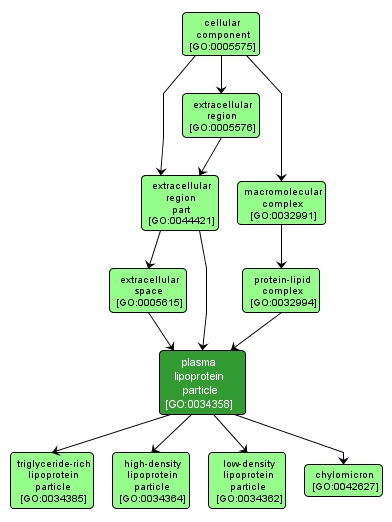| Desc: |
A spherical particle with a hydrophobic core of triglycerides and/or cholesterol esters, surrounded by an amphipathic monolayer of phospholipids, cholesterol and apolipoproteins. Plasma lipoprotein particles transport lipids, which are non-covalently associated with the particles, in the blood or lymph. |














